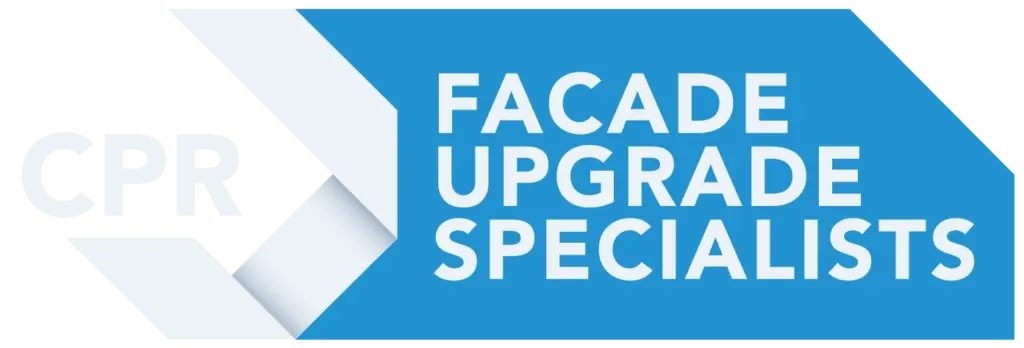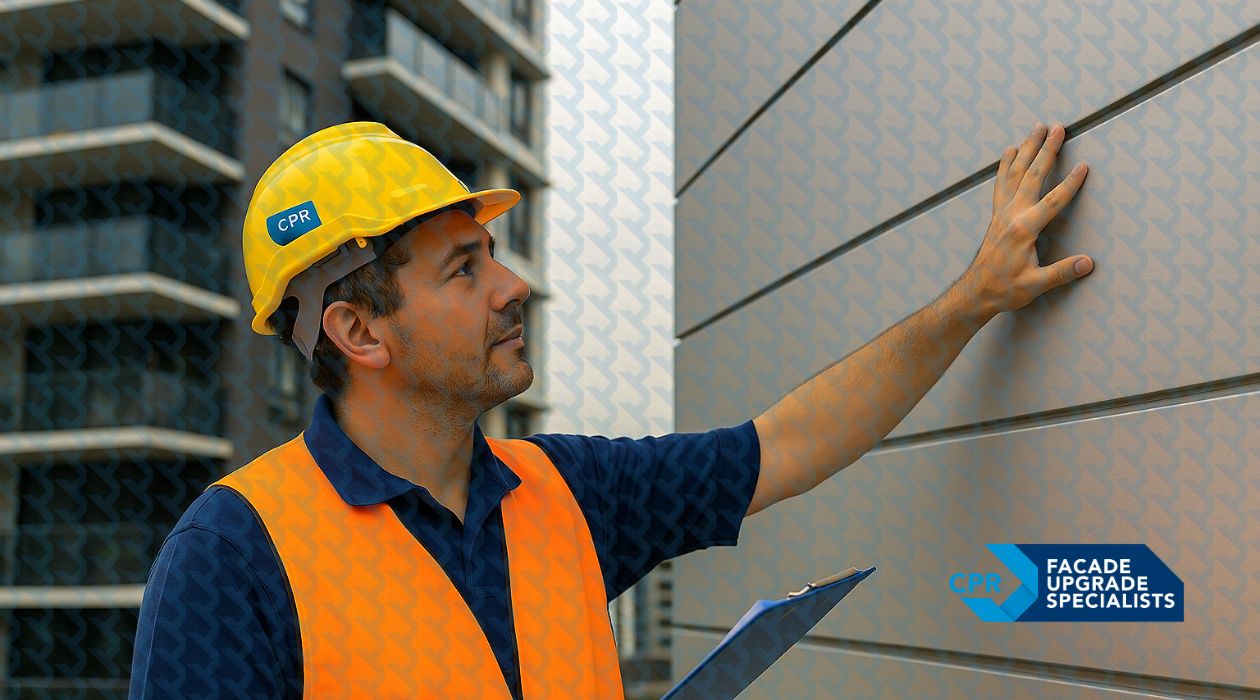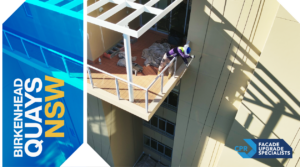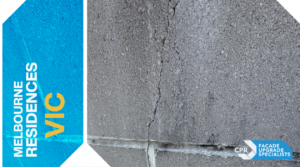Why Cladding Assessments Matter More Than Ever in Sydney
With cladding compliance becoming one of the most pressing issues in Australia’s construction and property sectors, building owners in Sydney can no longer afford to take a wait-and-see approach. Recent fires, costly remediation projects, and a tightening of state regulations have prompted a shift in how we think about façade safety.
The updated NSW cladding regulations for 2025 now require formal reviews of any building with combustible or potentially non-compliant cladding materials. These assessments aren’t just about ticking a box—they’re about protecting lives, managing risk, and staying ahead of costly disruptions.
A comprehensive cladding assessment in Sydney helps protect your building’s insurability, maintains asset value, and ensures peace of mind for owners, tenants, and regulatory bodies. In one 2023 case, a multi-unit development in Parramatta avoided both a fire order and an insurance rejection by acting early and commissioning a full CPR façade report.
What Qualifies as a Cladding Risk?
Many materials once considered standard are now deemed unsafe. Our team is trained to assess façade materials against current building cladding safety standards and flag risk areas, including:
- Aluminium Composite Panels (ACP) with flammable cores
- Expanded Polystyrene Systems (EPS)
- Foam-based insulation or renders
- Timber cladding and unknown laminate products
Any building constructed or renovated between 1997 and 2020 that hasn’t had a combustible cladding inspection in NSW may contain one or more of these materials. Even newer buildings can be at risk, especially if cladding products were installed before the latest certification rules came into effect.
CPR’s Process for a Professional Cladding Assessment
At CPR Facade Upgrade Specialists, we don’t just check boxes—we deliver clarity. Our method combines industry best practice, hands-on building knowledge, and compliance alignment:
- Initial Review: We gather original building plans, prior audits, and approvals.
- Site Inspection: Using rope access and drone footage, we inspect all accessible facades.
- SkyGrid™ Mapping: Each cladding section is tagged, logged, and risk-rated.
- Material Testing: When necessary, samples are taken and tested for combustibility.
- Compliance Benchmarking: Findings are aligned with NSW cladding regulations 2025.
- Strategic Report: You receive actionable, practical advice—from mitigation to full replacement.
Book Your Cladding Inspection Today →
Understanding the Regulatory Landscape
Cladding safety in NSW is regulated by:
- The National Construction Code (NCC)
- NSW Fire Safety Orders
- Local Council rectification policies
Owners are expected to:
- Identify all installed cladding systems
- Conduct expert-led façade risk assessments
- Submit appropriate documentation to authorities
- Finalise remediation through DBP-registered practitioners
Penalties for non-compliance can be significant. These include not only fines, but also occupation restrictions, increased insurance costs, and delays in property transactions.
Does Your Building Require a Cladding Audit?
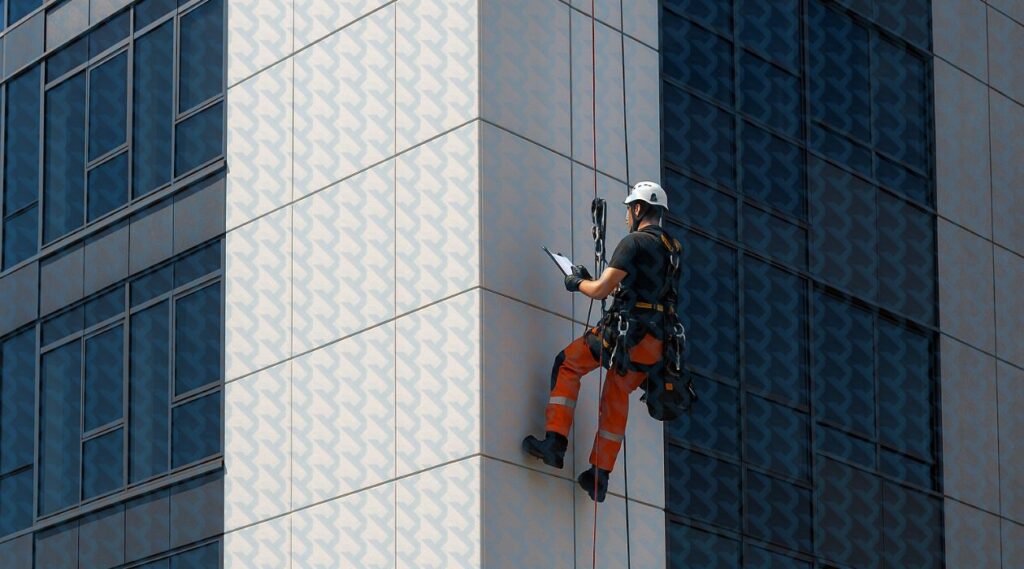
You likely need a cladding audit in Sydney if:
- Your building uses ACP, EPS, or similar materials
- It is three or more storeys high
- You’ve received a fire safety notice or insurance query
- You’re planning upgrades, refinancing, or strata strategy revisions
Even if your property has been assessed interstate—such as a cladding assessment in Melbourne—you still need a NSW-specific review to meet local compliance expectations.
What’s Included in Your CPR Cladding Report
Our deliverables are structured, clear, and regulator-ready:
- A full material inventory mapped to building elevations
- Photographic evidence and SkyGrid™ location tagging
- Fire-risk classifications per zone
- Pathways for cladding certification in NSW
- Costed action plans for remediation or replacement
In a recent example, our report helped a strata building in Randwick develop a phased remediation plan, maintain insurance coverage, and secure council support—all without displacing a single resident.
When Façade Risk Isn’t Visible
Some of the most hazardous cladding we’ve seen has looked perfectly safe. In one case, decorative façade panels on a new development in Sydney’s north were found to have a polyethylene core, despite appearing compliant. Only testing revealed the hidden danger.
A façade safety inspection in Sydney goes beyond appearances. It gives you the facts you need to make the right decisions.
Explore CPR’s Remediation & Preservation Services →
Immediate Mitigation or Full Replacement?
If urgent replacement isn’t an option right away, CPR helps building owners:
- Apply temporary fire-rated coatings or fire barriers
- Negotiate short-term council compliance extensions
- Plan staged remediation based on building use, funding, and risk
We also offer long-term Cladding Remediation and Façade Renewal advice in Sydney, tailored to your budget, site constraints, and compliance timeline.
Cladding Risk Assessment: 2025 Compliance Checklist
- Identify Cladding Type
- Confirm the type of cladding used (e.g. aluminium composite panels, expanded polystyrene, etc.).
- Check if it is listed as combustible or non-compliant by NSW regulations.
- Confirm the type of cladding used (e.g. aluminium composite panels, expanded polystyrene, etc.).
- Review Building Age & Past Works
- Determine when the building was constructed or last refurbished.
- Review past certifications or renovation documentation.
- Determine when the building was constructed or last refurbished.
- Engage a Qualified Cladding Assessor
- Use a licensed professional with expertise in fire safety and façade systems.
- Ensure they provide a detailed report and risk level.
- Use a licensed professional with expertise in fire safety and façade systems.
- Check Fire Safety Compliance
- Verify if cladding materials meet AS 1530.1 and AS 5113 fire testing standards.
- Assess vertical and horizontal fire spread risks.
- Verify if cladding materials meet AS 1530.1 and AS 5113 fire testing standards.
- Audit Building Approvals & Certificates
- Confirm if the cladding was approved under prior building codes.
- Check for compliance certificates or need for a retrospective approval.
- Confirm if the cladding was approved under prior building codes.
- Inspect for Deterioration or Damage
- Look for warping, cracking, or separation of panels that may increase fire risk.
- Document any maintenance concerns.
- Look for warping, cracking, or separation of panels that may increase fire risk.
- Update the Fire Safety Schedule
- Ensure your Fire Safety Schedule includes relevant cladding safety systems (e.g. sprinklers, alarms).
- Ensure your Fire Safety Schedule includes relevant cladding safety systems (e.g. sprinklers, alarms).
- Consult NSW Cladding Regulations (2025 update)
- Refer to the latest guidelines from the NSW Cladding Product Safety Panel and Fire and Rescue NSW.
- Stay informed on material bans or mandatory replacement rules.
- Refer to the latest guidelines from the NSW Cladding Product Safety Panel and Fire and Rescue NSW.
- Create a Remediation Plan (if needed)
- Outline scope of works, approved materials, timelines, and costs.
- Apply for financial support or incentives if eligible.
- Outline scope of works, approved materials, timelines, and costs.
- Lodge Findings with Authorities (if required)
- Notify relevant local councils or the NSW Cladding Registration portal if non-compliant.
- Retain proof of action for insurance and compliance.
- Inform Stakeholders
- Communicate findings and next steps with owners’ corporations, tenants, and insurers.
- Maintain Ongoing Monitoring
- Schedule periodic inspections and update safety documentation accordingly.
Keep your process on track with this simple guide:
Let us help you make each step clear and manageable.
Get Ahead of Risk and Regulation
With CPR, you get more than a report—you get a roadmap. Our assessments, strategic recommendations, and compliance tools ensure that your building meets today’s demands and tomorrow’s standards.
Whether you’re planning a cladding risk assessment in Sydney, dealing with non-compliant cladding in NSW, or conducting a strata building cladding review, we’re here to help.
